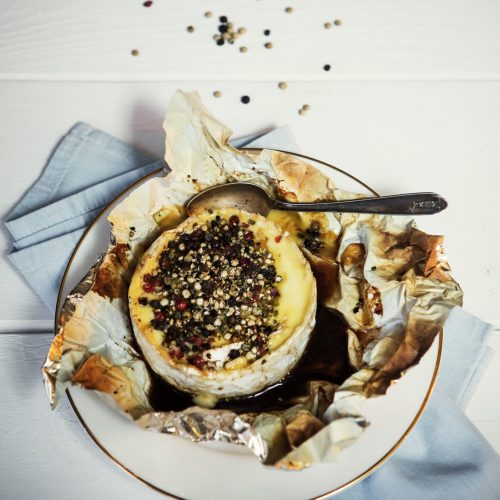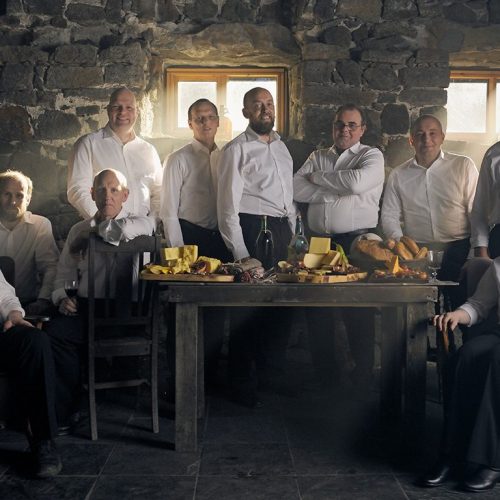Dairy products

During the settlement period, cows and sheep were the primary sources of milk. Because of the many place names and provisions in ancient laws related to goats, it is quite certain that a considerable number of them were kept. The goat stock gradually diminished and today the Icelandic goat is in danger of extinction. However it is possible to buy Icelandic goat cheese, but it is produced in small amounts so usually it´s only available at goat farms.
Dairy products have always been an important part of the Icelandic diet. Skyr, cheese and butter were, and still are, popular and whey quenched the thirst of our ancestors. Cheese making was very common in the early centuries of Icelandic settlement but nearly disappeared in the 17th and 18th centuries. Dalir in West iceland is a long-established agricultural region and cheese was, and is, an essential part of the region’s cultural history. Milk was used for boiling and infusion as well as pickling, whipping and curdling. Skyr probably became so crucial as it required less milk than regular cheese production, especially when the climate cooled around 1400, which caused a reduction in the number of cattle in the country.
Skyr
Skyr is mentioned in several Icelandic sagas. This established Icelandic tradition is thought to have remained almost unchanged since the settlement up until the middle of the last century. Skyr was initially made with sheep’s milk but now it is made with cow’s milk. Our female ancestors made skyr in their primitive and straightforward kitchens where our wonderful Icelandic skyr was developed. Skyr is considered our contribution to the world’s cheesemaking. Skyr is now produced and sold in many countries. It is rich in protein, fat-free and caters to all age groups.
Roquefort & Gorgonzola
In his 18th century travels around the country Eggert Ólafsson wrote: “The art of making good cheese is mostly lost and forgotten in Iceland.” However, he was not disappointed when he went to Ólafsdalur in Gilsfjörður. It was there that the first agricultural school was founded and run from 1880-1907, and the housewife Guðlaug Zakaríasdóttir was famous for her food production, including her sheep’s milk cheese that she sold to Reykjavík. Her daughter, Ragnheiður, went with a group of women to Copenhagen to study cheese- and buttermaking. They specialized in more expensive cheeses like sheep’s milk Roquefort and Gorgonzola from cow’s milk. It seems that cheesemaking was a woman’s job. Ólafur Olavius got laughed at for writing and publishing a pamphlet on butter- and cheesemaking in 1780, as it was not considered masculine to be interested in cooking and food production.
Butter exported to UK
The establishment of dairies and the development of the dairy industry can be traced back to the start of urbanization. The first indicator of the modern dairy industry was the establishment of the so-called creameries. At the end of the 19th century, the state of Icelandic agriculture was dire. Sigurður Sigurðsson at Búnaðarfélag Suðuramtsins believed that by supporting the dairies, the agricultural industry might be saved. The weather was terrible and haying was hard because of rains. The price of wool and sheep for export plummeted, and new ways had to be found. At the time, Denmark got a very high price for the butter they sold to England. The Icelandic Parliament passed a law that anyone who exported 300 pounds or more of Icelandic butter in a single shipment and received similar prices to the Danes – due to the quality of the butter – would be entitled to a prize from the treasury. This operation was a stimulus for improved quality, not quantity. Today’s Icelandic butter is particularly good, but in the past butter was sometimes pickled to preserve it for a long time.
Women mostly operated creameries
This was followed by the establishment of the first dairy school in Hvanneyri in 1900, the same year the first creamery opened its doors. The following years saw the opening of other creameries; all focusing on export. They were small and only operated for a short period, most of them closing after 1918. The managers of the creameries were usually women and their role is thought to have advanced the standing of Icelandic women.
Mjólkursamsalan is the largest company in the Icelandic dairy industry today. The smaller ones include Arna in Bolungarvík, specializing in lactose-free dairy products, Kú dairy, bought by Ölgerðin in 2017 and smaller production units like Erpsstaðir farm. Many kinds of cheese and dairy products are made in Iceland, as is evidenced by the selection available in our supermarkets. Everyone should be able to find something they like.
Photos: Courtesy of MS Iceland Dairy


